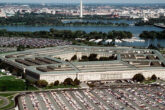January 01, 2018
From 'flags and footprints' to having a routine presence in space
President Trump’s signing of Space Policy Directive 1 once again gives NASA a mission adjustment and beneficial goals. The directive recommits NASA to:
“Lead an innovative and sustainable program of exploration with commercial and international partners to enable human expansion across the solar system and to bring back to Earth new knowledge and opportunities.”
With the recent successes by the commercial sector, the space domain is no longer for governments by governments: NASA and the U.S. government require a fundamental change in tactics. While activities in space will always remain linked to Earth, shifting their “center” and expanding infrastructure from the surface of the Earth into Earth’s orbits and beyond by efficiently leveraging commercial capabilities is key to beginning the transition from “flags and footprints” to routine activities and presence in space.
“One mission, one destination” is the typical strategic mindset common to NASA’s science and human exploration missions, which results in developing required capabilities from scratch (e.g. SkyCrane) or looking at reusing existing technologies for other mission uses with minimal design change (heritage technology is preferred assuming that it drives down mission costs, a fact not always true, especially if such capabilities do not exist anymore — e.g. Orion TPS).
Read the full commentary in The Hill.
More from CNAS
-
The Department of Defense’s Breakthrough Nuclear Moment Risks Slipping Away
Unless they act, the Department of Defense’s breakthrough nuclear moment may vanish before it really happens....
By Will Rogers
-
DEFAERO Strategy Series [Apr 09, 25] CNAS' Becca Wasser and Phil Sheers on Revitalizing the U.S. Defense Industrial Base
On this episode of the Defense & Aerospace Report Strategy Series, sponsored by General Atomics Aeronautical Systems, Becca Wasser and Phil Sheers of the Center for a New Amer...
By Becca Wasser & Philip Sheers
-
From Production Lines to Front Lines
Executive Summary The U.S. defense industrial base (DIB) is struggling to meet the demands of the current strategic environment—let alone prepare for a potential conflict agai...
By Becca Wasser & Philip Sheers
-
The Pentagon’s Endangered Brain Trust
In this environment, sound assessments of emerging threats and new ideas to counter them will be especially vital....
By Dr. Andrew Krepinevich, Jr.




